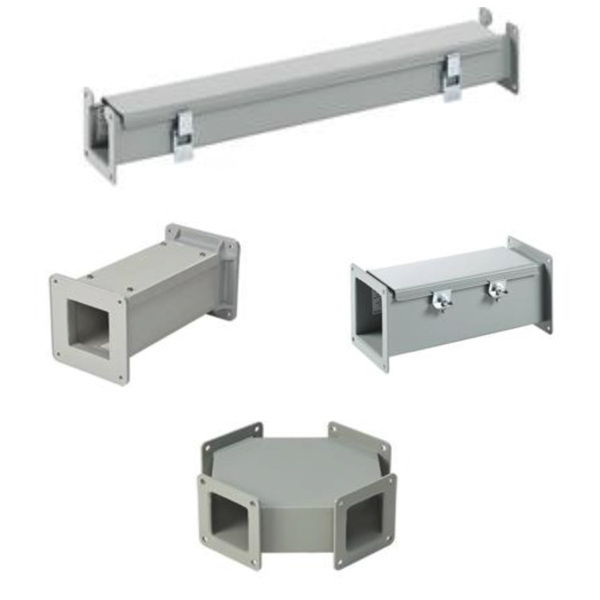Wireways

Wireways are protective enclosures used to organize, route, and safeguard electrical wiring in industrial and commercial environments. Sometimes referred to as raceways, wireways provide a structured path for cables while shielding them from physical damage, dust, and other environmental hazards. Proper cable management using wireways supports safer installations, improved system reliability, and easier maintenance.
Wireways are manufactured from durable materials such as galvanized steel, stainless steel, aluminum, and PVC, allowing them to be matched to specific environmental and application requirements. Metal wireways offer strength and impact resistance for industrial settings, while PVC wireways provide corrosion resistance and lightweight installation for indoor and corrosive environments.
Available in a wide range of sizes and configurations, wireways can accommodate various wiring types and volumes. Many designs feature modular construction, allowing sections to be joined and extended as needed. Removable covers provide convenient access for installation, inspection, and maintenance, while the low-profile design helps maintain smooth cable routing and supports proper airflow for heat dissipation.
FAQs
Q: What is a wireway used for?
A wireway is used to route and protect electrical cables, keeping wiring organized and shielded from environmental and mechanical damage.
Q: What materials are wireways made from?
Common wireway materials include galvanized steel, stainless steel, aluminum, and PVC, each suited for different environments and durability requirements.
Q: Are wireways the same as raceways?
Yes, wireways are often referred to as raceways, as their primary function is to provide an organized pathway for routing cables.
Q: Do wireways allow access to cables after installation?
Most wireways feature removable covers, allowing easy access for wiring installation, inspection, or future modifications.
Q: Can wireways help with heat dissipation?
Yes, the design and available airflow within wireways can support heat dissipation, helping maintain safe operating conditions for enclosed wiring.
Why Buy Wireways from RSP Supply
RSP Supply offers a broad selection of wireways designed to meet the cable management needs of industrial and commercial installations. Our product range includes multiple materials, sizes, and configurations to support efficient routing and long-term protection of electrical wiring. Customers rely on RSP Supply for dependable industrial components, technical expertise, and solutions that support safe and organized electrical systems.

